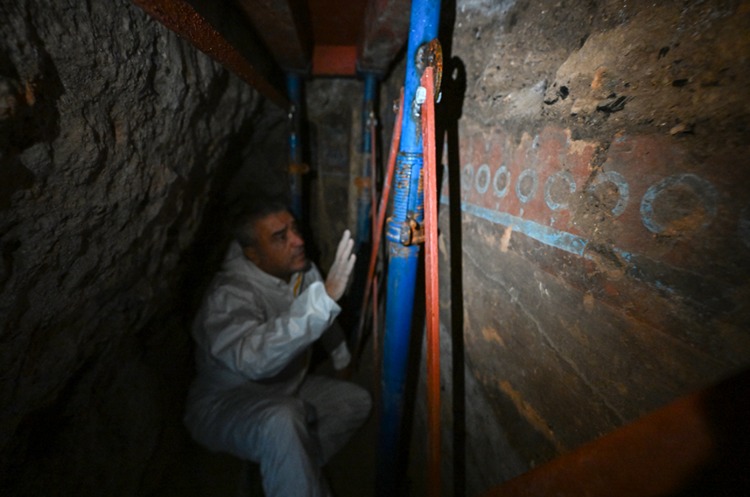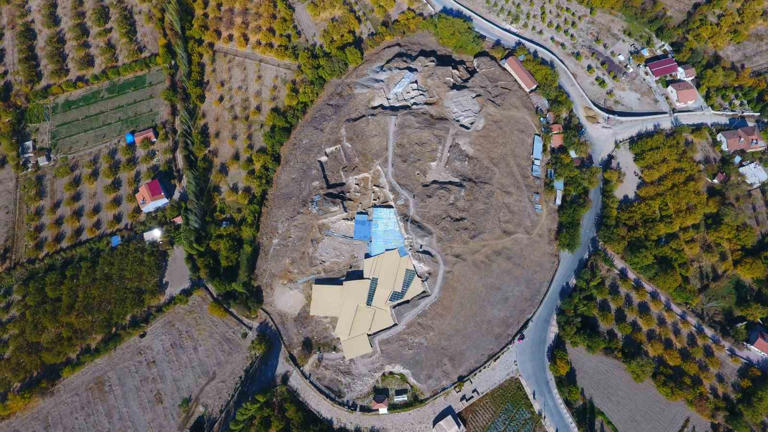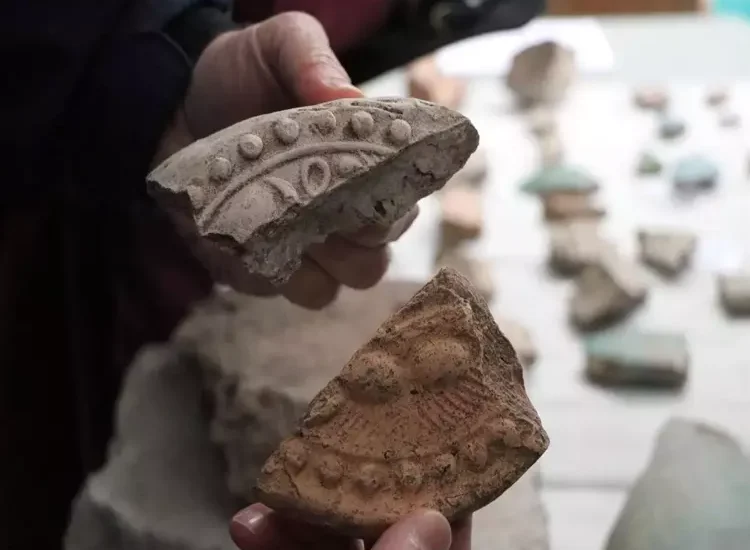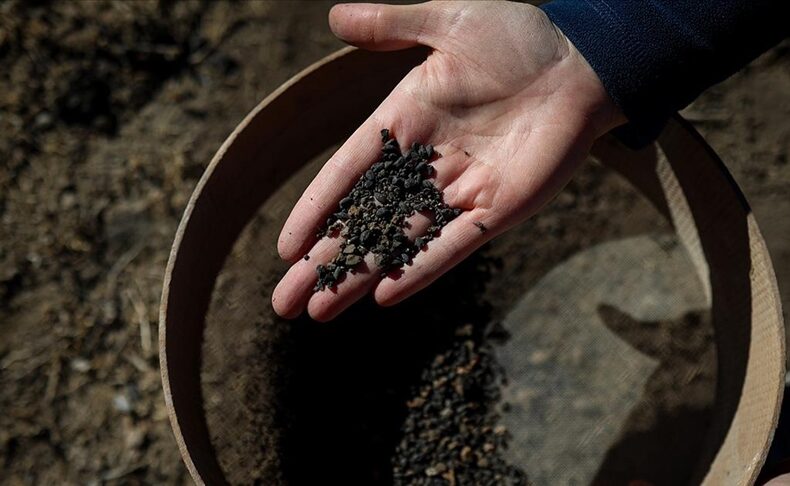
Mysterious Stone Structure Near Kars Raises New Questions About an Unstudied Peak
A solitary stone construction perched atop a hill outside Kars is drawing increasing attention, not because anyone understands it, but precisely because no one does. Rising above Bulanık village, the summit known locally as “Ziyaret Tepesi” or “Evliya Tepesi” hosts a five-meter-high structure whose origins remain completely undocumented. A hill between two mountains — and

3,000-Year-Old Urartian Wall Paintings Protected Beneath Van’s Garibin Hill
Deep beneath the rugged terrain of eastern Türkiye, archaeologists have uncovered one of the most extraordinary artistic survivals of the Urartian Kingdom — a network of subterranean chambers whose walls still bear vivid, 3,000-year-old paintings. The fragile murals, discovered accidentally during an illegal excavation in Van’s Tuşba district, are now being carefully preserved under a

Architectural Traces Predating the Karaz Culture Unearthed in Eastern Anatolia’s Değirmenler Mound
Archaeologists in eastern Türkiye have uncovered architectural remains predating the Karaz (Early Bronze Age) culture during ongoing rescue excavations at Değirmenler Mound in Erzurum’s Yakutiye district. The discovery—revealing structures, hearths, ovens, and domestic layers dating back more than 6,000 years—suggests that settled life in the region began earlier than previously believed. The excavation, conducted under

8,000-Year-Old Life Traces Unearthed in Delikli Cave, Bitlis: From Prehistory to the Urartians
Archaeologists excavating Delikli Cave in Türkiye’s Bitlis Province have uncovered traces of human life dating back 8,000 years — including obsidian tools, handmade pottery, Urartian-era burials, and medieval building remains — revealing a rare continuum of settlement from prehistory through the Middle Ages. Perched about 60 meters above the current level of Lake Van in

Six Aramaic Inscriptions Unearthed at Zernaki Tepe Reveal Forgotten Parthian Frontier in Eastern Türkiye
Archaeologists have uncovered six new Aramaic inscriptions at Zernaki Tepe, a 3,000-year-old ancient city in Van Province, eastern Türkiye. The discoveries — including three deliberately erased texts — illuminate a turbulent Parthian-era presence in Anatolia and the shifting power struggles between empires that once vied for control of the region. Located in the Yukarı Işıklı

Ongoing Excavations at Garibin Tepe Near Van Shed Light on Urartian Architecture and Conservation Efforts
Archaeological works continue at Garibin Tepe in Türkiye’s Van province, one of the most intriguing Urartian sites of recent years. Excavations this season have focused on documenting massive walls, lion statues, and wall paintings as researchers seek to understand the architectural layout and royal character of the ancient complex. Located about 30 kilometers from central

Arslantepe Mound: New Clues to the World’s First State System
The ancient site of Arslantepe in Malatya, Türkiye, continues to reshape our understanding of early civilization. Listed as a UNESCO World Heritage Site since 2021, the mound has been excavated for over 65 years by Italian archaeologists and is recognized as the birthplace of one of the world’s earliest state systems. Prof. Dr. Francesca Balossi

Mongol Palace of Hulagu Khan Unearthed in Van: A Roof Tile Sparked the Discovery
A simple roof tile found in a field two decades ago has led to one of the most remarkable international archaeological discoveries in recent years. Excavations in Hanköy, a rural village in Türkiye’s Van province, have revealed the remains of a palace and settlement linked to Hulagu Khan, the founder of the Ilkhanate and grandson

5,000-Year-Old Evidence of Charcoal-Based Medicine and Ancient Antibiotic Resistance Unearthed in Zonguldak’s İnönü Cave
A groundbreaking interdisciplinary study led by archaeologists and microbiologists from Zonguldak Bülent Ecevit University (BEUN) has revealed that prehistoric communities in northern Türkiye were using charcoal for medicinal purposes 5,000 years ago. The same project also traced the origins of antibiotic resistance genes back more than 6,000 years, challenging assumptions that resistance emerged solely due

